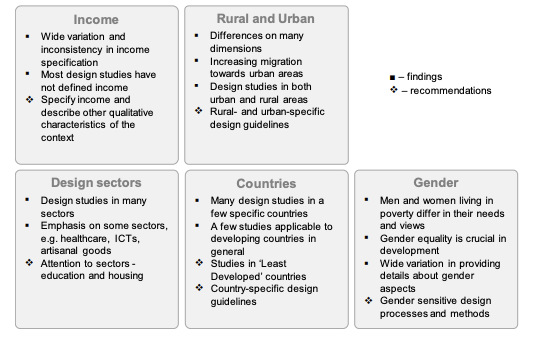
Design, Frugal Innovations and Low-Resource Settings: An Analysis of Five Contextual Aspects
- Post by: Tobias Larsson
- 8th January 2021
- No Comment
Abstract
A data analysis method based on artificial neural networks aiming to support cause-and-effect analysis in design exploration studies is presented. The method clusters and aggregates the effects of multiple design variables based on the structural hierarchy of the evaluated system. The proposed method is exemplified in a case study showing Designing frugal innovations is crucial to alleviate problems faced by peo-ple living in low resource settings. Many design studies have been undertaken in such low resource settings. These studies are discussed using a variety of names such as ‘frugal innovations’, ‘appropriate technology’, ‘design for the Base of the Pyramid (BOP)’, ‘product service systems for BOP’, ‘community development engineering’, ‘design for development’, etc. There is an important need to know in what context these studies were undertaken. In order to gain an in-depth understanding of the con-textual aspects of these studies, we review a wide range of literature, focussing on design studies in this field. The review findings show a multifaceted picture, revealing a large variety in examination and presentation of contextual aspects such as income, design sectors, countries, rural-urban, and gender. Based on the review findings, we offer recommendation for practice, education and research of designing frugal innova-tions in low resource settings.
Keywords
Design process, Product Service Systems, Base of the Pyramid, Frugal Innovations, Low Resource Settings, Context
Citation
Jagtap, S. (2021). Design, Frugal Innovations and Low-Resource Settings: An Analysis of Five Contextual Aspects. International Conference on Research into Design, ICoRD 2021, IIT Bombay, Mumbai, India.
